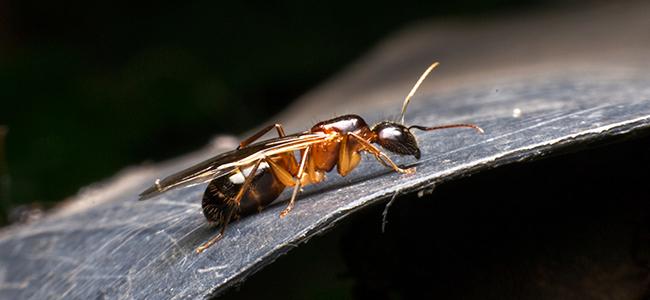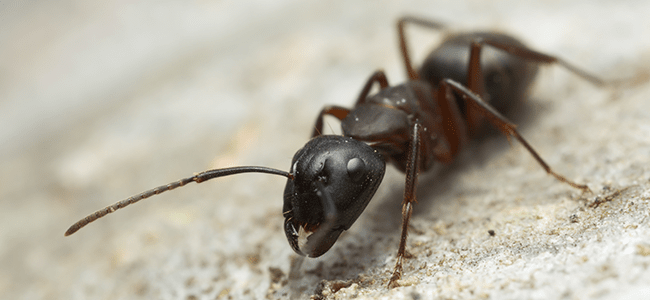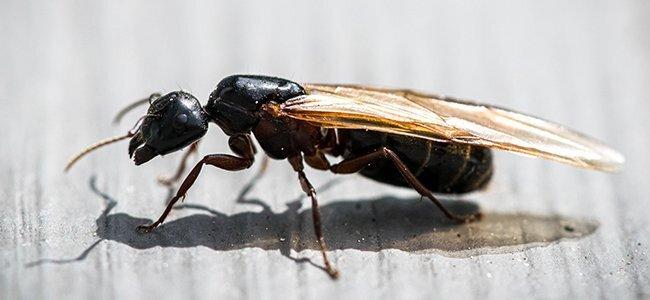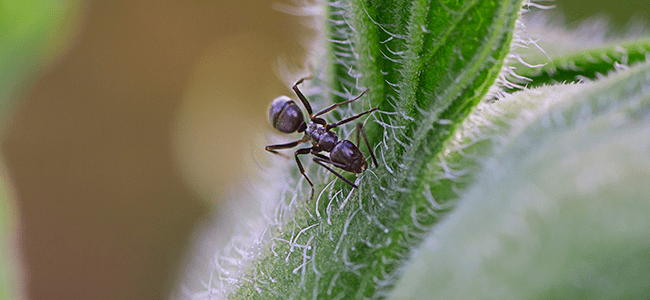
Washington D.C.'s Complete Guide To Odorous House Ant Control
09/03/2021
If ants are making their way around your Washington D.C. home, they can bring a variety of problems to you and your family. However, if it’s ...
READ MORE >

When it comes to ant threats, one ant rises to the top, especially in the Northeastern United States. It is the carpenter ant. Why is this? Because this type of ant chews galleries and tunnels in wood and is able to cause significant damage to man-made structures. In a recent article, we gave an introduction to these little pests that can be a big problem. Now, we're going to look at why they attack man-made structures and what types of structures they are likely to attack first.
In nature, carpenter ants will normally establish themselves in a log, a stump, or a hollow tree. When they come into your DC yard, which is quite common even now as we head into fall, they don't know the difference between a rotting tree in the woods and rotting wood in your yard. If they find a section of a shed that has been softened by water, they are more than happy to chew their way inside the walls. If they find an exterior staircase that is rotting from continual moisture in a shaded location, they will happily nibble on it. If they come across a large wooden structure used to hold flowers or ornamental plants that have been softened and rotted due to routine watering, they'll find a perfect home inside that wood.
There are many ways you might have wood in your yard that is interesting to carpenter ants. It could be a rotted portion of your fence. It could be an old stump that hasn't been removed yet. It might be a railroad tie that you use as part of your decorative landscaping. It might be a dying tree. We could go on, but you get the point. Any wooden object in your yard that has been damaged by moisture, insects, the sun, etc. can be an attractant for carpenter ants.
When carpenter ants attack a home, there are two essential ways they'll do it. They will target a rotted area or they will exploit an entry point. Let's take a look at these.
Any external structure can start to rot if it is exposed to continual moisture. If you have a porch, deck, patio, garage, stairwell, or some other structure that is being moistened by rainwater running down the side of your home, it is important to address the faulty gutter that is allowing this to occur. If you have puddles that form next to your home after it rains, look into loosening the soil or creating a gradient to allow the rainwater to channel away from your foundation walls. If you have leaky spigots or hoses, they should be repaired. Any condition that creates standing water, soaking moisture or a constant increase in humidity should be addressed. Carpenter ants attack rotting wood first but will move on to sound wood as they grow in numbers.
Sometimes carpenter ants don't chew their way into a home, they find an entry point. It may be a hole chewed by a rodent. It may be a gap that has formed from expansion and contraction. It may be a vent. There are many ways carpenter ants can find a way in. When they do, they will work their way toward locations in your home that offer them an ideal starting place to establish a nest, such as the wooden structures around sinks, dishwashers, tubs, showers, and other areas of moisture. They may target the wood behind a chimney because chimneys can begin to pull away from the exterior walls of a structure which can create gaps that rainwater get into, as time goes on. They may establish themselves in basement timbers if your basement is moist.
When carpenter ants get into the structures of a home, they can often go unnoticed. Even though they push frass (sawdust) out of their tunnels, this frass often lands under structures, in places we have to crawl in to see. Or frass might be pushed out into a wall or ceiling void. If you see carpenter ants near your home, it is important to contact a professional and get an inspection. While there are many ways to prevent carpenter ants, a professional knows how to monitor for the presence of carpenter ants to ensure that your equity isn't being slowly eaten away by these wood-destroying insects.
If you need assistance with ant control in DC, Maryland, Northern Virginia or the surrounding states, give us a call today.

09/03/2021
If ants are making their way around your Washington D.C. home, they can bring a variety of problems to you and your family. However, if it’s ...
READ MORE >

07/21/2021
When ants go on the march, nothing can stand in their way — not even your D.C. property. There are at least 700 different species of ants r...
READ MORE >

05/20/2021
If you are finding more pavement ants on your property than you want to, you need to know the trick to effective pavement ant control for Virginia ...
READ MORE >

04/30/2021
If you’ve ever had ants get into your house, you know how annoying it can be. There’s no such thing as seeing just one ant in your hous...
READ MORE >

Protect your home and family from nuisance and potentially damaging pests with a Preferred Care home pest control plan. Starting at $49/month

Don't let the bed bugs bite a second longer. Contact American Pest for the most comprehensive bed bug control in the industry. Learn More

Our certified rodent control pros will put an end to your frustration by getting rid of rats and mice inside your home. Learn More

Say goodbye to wood-destroying termites in your home when you contact American Pest for expert termite control. Learn More

Trust American Pest to deliver professional backyard tick control services that are guaranteed to get results. Learn More

Don't spend the warm-weather season indoors, find out how American Pest's professional treatments get rid of mosquitoes. Learn More
Fill out the form and recieve feedback in less than 5 minutes. For immediate service please call.